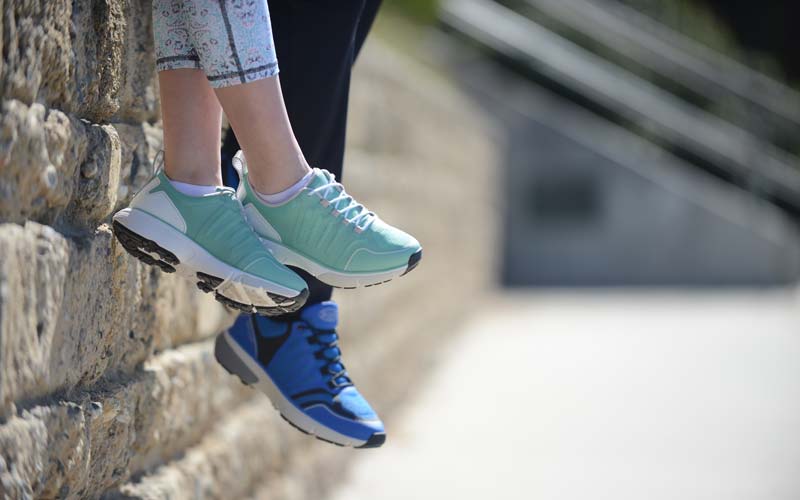
Diabetes is a chronic health condition affecting over 34 million Americans today. If left uncontrolled, diabetes can cause complications in many of the body’s major systems. One of the most common complications of diabetes is development of calluses, sores, and ulcers on the feet. As many as 1 in 4 people with diabetes will develop some degree of foot ulceration in their lifetime without proper preventative measures. In severe cases, amputation of part or all of the foot may even be required. Thankfully, medical equipment specialists like Kohll’s Pharmacy are here to help.
A comprehensive diabetes care plan includes several key components. Blood glucose lowering medications and a diabetes-friendly diet are at the center, but individuals can also take preventative measures to preserve their foot health. Foot ulcer development in people with diabetes occurs due to a combination of reduced blood flow, uneven pressure and rubbing from non-specialized shoes. Irritation sometimes goes unnoticed for long periods of time in people with diabetes due to decreased sensation caused by the disease, eventually leading to ulcer development. Custom made diabetic footwear works by redistributing the wearer’s weight to relieve pressure in critical areas by 30% or more and preventing skin irritation, which reduces the chance of ulcer development and recurrence by up to half.
So how can you tell if the shoes are doing their job? One customer from Kohll’s Pharmacy stated the difference in support is noticeable: “I still wear less supportive shoes or slippers around the house or for short trips, but when I go for walks or stand on my feet all day at work, I always wear my fitted pair.” She went on to say that she even uses her extra inserts in tennis shoes for added safety. When asked if she recommends diabetic shoes for others, her answer was a resounding yes.
The benefit of custom fitted diabetic shoes is clear, and everyone with diabetes should have a pair. Luckily, they are covered by most insurance plans, including Medicare and Medicaid. Before bringing in a prescription, there are a few key steps that must be taken to ensure your new diabetic shoes will be covered. First, you must have had an in person visit with the doctor that manages your diabetes within the last 6 months. At this visit, your doctor needs to perform a foot exam and document evidence of one or more of the following conditions in the medical record:
Once an in-person foot exam has been performed and evidence of a foot-related condition has been documented, the next step is obtaining a prescription. The requirements for a medical equipment prescription are slightly different than a typical medication prescription, so be sure to remind your doctor to include the following information:

The supplier of your new shoes will also need a copy of the chart note specifying which of the conditions listed above affect you. Requesting the chart notes ahead of time and bringing them along with the prescription will speed up the paperwork process significantly. Once your medical equipment provider, like Kohll’s, has acquired the proper documentation, you will be contacted to set up a fitting for a brand-new pair of custom diabetic shoes. It may take up to 17 days to process the fitting and construct the shoes, but they will be well worth the wait!
If you have any questions regarding insurance coverage for diabetic footwear, contact the medical equipment specialists at Kohll’s Pharmacy.